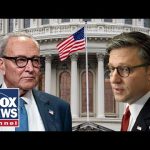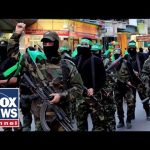In Portland, the ongoing tumult appears to be reaching a crescendo. Fed up with the chaos, the President has taken decisive action to put an end to what many have described as the city’s “summer of unrest.” For months, Portland has become a hotspot for nightly confrontations, and the images coming out of the city paint a stark picture. Protesters, with Antifa often cited as being among them, have turned the city into a battleground, leaving local law enforcement stretched thin and weary.
The President has directed Secretary Hegseth to deploy necessary troops to Portland to safeguard not just the city but particularly the ICE facilities under threat from left-wing groups. For over a hundred days, these facilities have been targeted, as activists, some not so peaceful, attempt to make their fevered points by escalating violence. This is more than just political theater; it’s an ongoing threat to public safety and order that now demands robust intervention.
Opposing this federal action, Portland’s Mayor has urged a less militaristic approach, calling for a cadre of engineers, teachers, and outreach workers to address the community’s woes—because nothing screams “peaceful solution” like sending a school counselor into a riot. He claims the city isn’t plagued by lawlessness, suggesting instead that federal intervention might perpetuate disorder. Intriguing, since for three-digit days, the city has been submerged in mayhem, which is quite the contrary to the “peace” that the Mayor appears to be witnessing.
On the ground, the scene is described as chaotic and dangerous by those tasked with maintaining order. The ICE officials report a nightly siege-like atmosphere where officers face an onslaught of attacks including rocks, Molotov cocktails, and other improvised weapons. The irony of the Mayor’s statements is not lost on those who put their lives on the line, night after night, just to enforce laws passed by the very legislative bodies the protesters claim to be upholding.
Elsewhere, the President’s decisions have shown tangible results. Memphis provides a model of effective federal-local collaboration, with illegal weapons seizures and a significant number of arrests, leading to safer streets. This bolsters the argument for federal involvement in cities like Portland, except where local leaders seem to relish chaos as a form of misguided protest. It seems a tragically simple concept that fewer weapons in the hands of criminals tend to lead to fewer crimes, a lesson that hasn’t been lost on other crime-plagued cities.
The federal response, thus far, points to a willingness to use substantial force to protect federal properties and maintain order, suggesting that the chaos in Portland is unmanageable solely by local means. There’s a lesson here somewhere, perhaps in the juxtaposition of well-intentioned community outreach against the stark reality of nightly violence. What is abundantly clear, though, is that many Americans see the need for law and order as a primary government function, a principle that should perhaps be less controversial than current events suggest.




